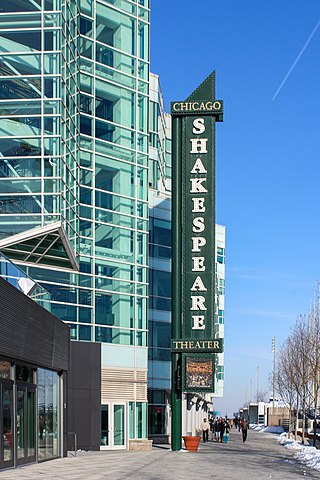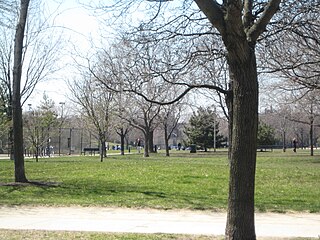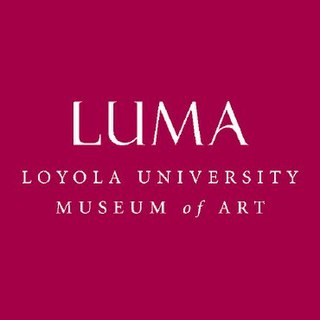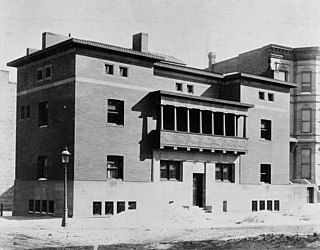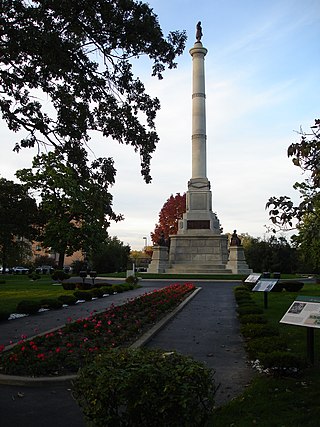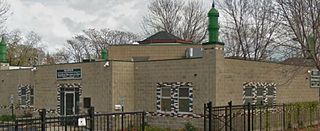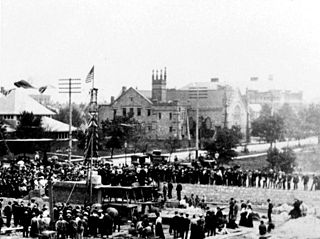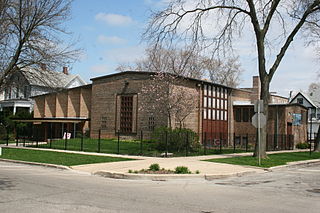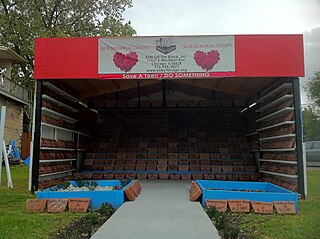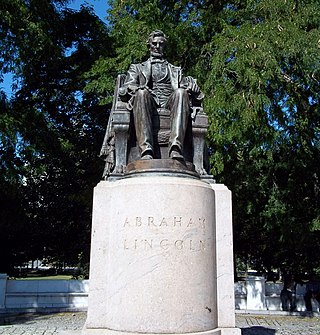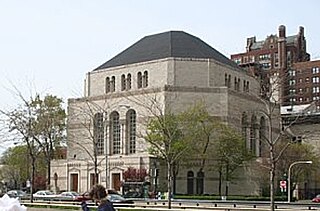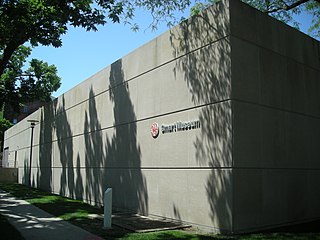100 Sights in Chicago, United States (with Map and Images)
Legend
Welcome to your journey through the most beautiful sights in Chicago, United States! Whether you want to discover the city's historical treasures or experience its modern highlights, you'll find everything your heart desires here. Be inspired by our selection and plan your unforgettable adventure in Chicago. Dive into the diversity of this fascinating city and discover everything it has to offer.
Sightseeing Tours in ChicagoActivities in Chicago1. Chicago Architecture Center
The Chicago Architecture Center (CAC), formerly the Chicago Architecture Foundation, is a nonprofit cultural organization based in Chicago, Illinois, United States, whose mission is to inspire people to discover why design matters. Founded in 1966, its programs include public tours and programs, most notably the docent-led architecture cruise on the Chicago River, and other tours in the Chicago area. The river cruise is ranked in the top ten tours in the U.S. by TripAdvisor users. CAC includes conference and exhibition space, including a scale model of downtown Chicago.
2. Michael Jordan
The statue of Michael Jordan, also known as The Spirit, is a bronze sculpture by Omri Amrany and Julie Rotblatt-Amrany that has been located inside the United Center in the Near West Side community area of Chicago since March 1, 2017. The sculpture was originally commissioned after Jordan's initial retirement following three consecutive NBA championships and unveiled prior to the Bulls taking residence in their new home stadium the following year. Depicting Basketball Hall of Fame member Michael Jordan and unveiled outside the United Center on November 1, 1994, the 12-foot (3.7 m) sculpture stands atop a 5-foot (1.52 m) black granite base. Although not critically well received, the statue has established its own legacy as a meeting place for fans at subsequent Bulls championships and as a rallying point for Chicago Blackhawks fans.
3. Chicago Blackhawks 75th Anniversary Sculpture
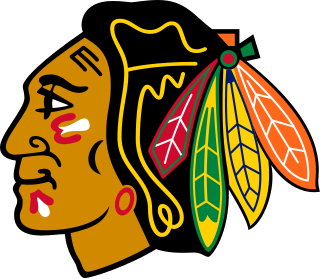
The Chicago Blackhawks are a professional ice hockey team based in Chicago. The Blackhawks compete in the National Hockey League (NHL) as a member of the Central Division in the Western Conference and have won six Stanley Cup championships since their founding in 1926. They are one of the "Original Six" NHL teams, along with the Detroit Red Wings, Montreal Canadiens, Toronto Maple Leafs, Boston Bruins, and New York Rangers. Since 1995, the team has played their home games at the United Center, which they share with the National Basketball Association's Chicago Bulls; both teams previously played at the now-demolished Chicago Stadium.
4. Begin Route 66
U.S. Route 66 or U.S. Highway 66 was one of the original highways in the United States Numbered Highway System. It was established on November 11, 1926, with road signs erected the following year. The highway, which became one of the most famous roads in the United States, ran from Chicago, Illinois, through Missouri, Kansas, Oklahoma, Texas, New Mexico, and Arizona before terminating in Santa Monica in Los Angeles County, California, covering a total of 2,448 miles (3,940 km).
5. Chicago L
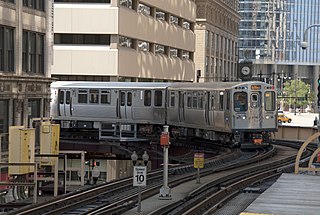
The Chicago "L" is the rapid transit system serving the city of Chicago and some of its surrounding suburbs in the U.S. state of Illinois. Operated by the Chicago Transit Authority (CTA), it is the fourth-largest rapid transit system in the United States in terms of total route length, at 102.8 miles (165.4 km) long as of 2014, and the third-busiest rapid transit system in the United States after the New York City Subway and the Washington Metro. As of January 2024, the "L" had 1,480 rail cars operating across eight different routes on 224.1 miles of track. CTA trains make about 1,888 trips each day servicing 146 train stations. In 2023, the system had 117,447,000 rides, or about 400,000 per weekday in the second quarter of 2024.
6. Brachiosaurus Replica
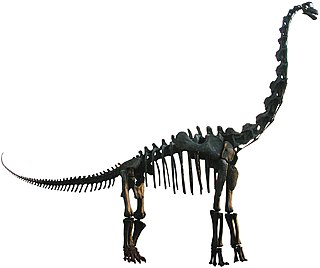
Brachiosaurus is a genus of sauropod dinosaur that lived in North America during the Late Jurassic, about 154 to 150 million years ago. It was first described by American paleontologist Elmer S. Riggs in 1903 from fossils found in the Colorado River valley in western Colorado, United States. Riggs named the dinosaur Brachiosaurus altithorax; the generic name is Greek for "arm lizard", in reference to its proportionately long arms, and the specific name means "deep chest". Brachiosaurus is estimated to have been between 18 and 22 meters long; body mass estimates of the subadult holotype specimen range from 28.3 to 46.9 metric tons. It had a disproportionately long neck, small skull, and large overall size, all of which are typical for sauropods. Atypically, Brachiosaurus had longer forelimbs than hindlimbs, which resulted in a steeply inclined trunk, and a proportionally shorter tail.
7. Cloud Gate
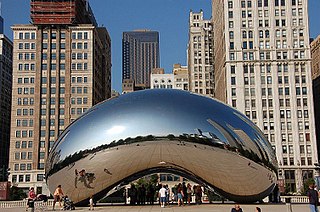
Cloud Gate is a public sculpture by Indian-born British artist Anish Kapoor, that is the centerpiece of Grainger Plaza at Millennium Park in the Loop community area of Chicago. Constructed between 2004 and 2006, the sculpture is nicknamed "The Bean" because of its shape, a name Kapoor later grew fond of. Made up of 168 stainless steel plates welded together, its reflective and highly polished exterior has no visible seams. It measures 33 by 66 by 42 feet, and weighs 110 short tons. The sculpture and its plaza are located above Park Grill, between the Chase Promenade and McCormick Tribune Plaza & Ice Rink.
8. Millennium Park
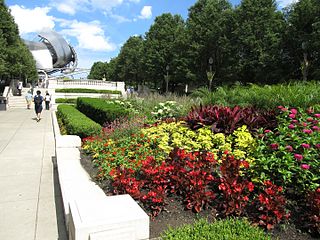
Millennium Park is a public park located in the Loop community area of Chicago, operated by the Chicago Department of Cultural Affairs. The park, opened in July 2004, is a prominent civic center near the city's Lake Michigan shoreline that covers a 24.5-acre (9.9 ha) section of northwestern Grant Park. Featuring a variety of public art, outdoor spaces and venues, the park is bounded by Michigan Avenue, Randolph Street, Columbus Drive and East Monroe Drive. In 2017, Millennium Park was the top tourist destination in Chicago and in the Midwest, and placed among the top ten in the United States with 25 million annual visitors.
9. 360 Chicago
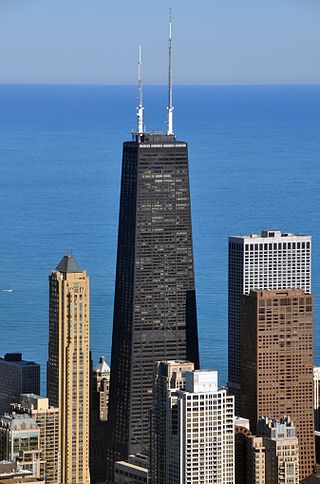
The John Hancock Center is a 100-story, 1,128-foot supertall skyscraper located in Chicago, Illinois. Located in the Magnificent Mile district, the building was officially renamed 875 North Michigan Avenue in 2018.
10. Olmec Head
The Olmec colossal heads are stone representations of human heads sculpted from large basalt boulders. They range in height from 1.17 to 3.4 metres. The heads date from at least 900 BC and are a distinctive feature of the Olmec civilization of ancient Mesoamerica. All portray mature individuals with fleshy cheeks, flat noses, and slightly-crossed eyes; their physical characteristics correspond to a type that is still common among the inhabitants of Tabasco and Veracruz. The backs of the monuments are often flat.
11. Mission of Our Lady of the Angels
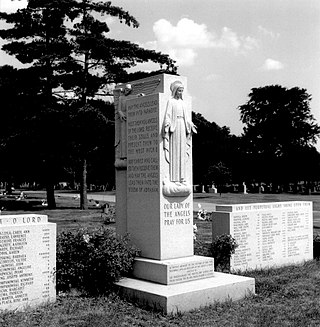
On Monday, December 1, 1958, a fire broke out at Our Lady of the Angels School in Chicago, Illinois, shortly before classes were to be dismissed for the day. The fire originated in the basement near the foot of a stairway. The elementary school was operated by the Archdiocese of Chicago and had an enrollment of approximately 1600 students. A total of 92 pupils and three nuns ultimately died when smoke, heat, fire, and toxic gases cut off their normal means of egress through corridors and stairways. Many more were injured when they jumped from second-floor windows which, because the building had a raised basement, were nearly as high above ground as a third floor would be on level ground, approximately 25 feet (7.6 m).
12. Sue the Dinosaur
Sue is the nickname given to FMNH PR 2081, which is one of the largest, most extensive, and best preserved Tyrannosaurus rex specimens ever found, at over 90 percent recovered by bulk. FMNH PR 2081 was discovered on August 12, 1990, by American explorer and fossil collector Sue Hendrickson, and was named after her.
13. Field Museum
The Field Museum of Natural History (FMNH), also known as The Field Museum, is a natural history museum in Chicago, Illinois, and is one of the largest such museums in the world. The museum is popular for the size and quality of its educational and scientific programs, and its extensive scientific specimen and artifact collections. The permanent exhibitions, which attract up to 2 million visitors annually, include fossils, current cultures from around the world, and interactive programming demonstrating today's urgent conservation needs. The museum is named in honor of its first major benefactor, Marshall Field, the department-store magnate. The museum and its collections originated from the 1893 World's Columbian Exposition and the artifacts displayed at the fair.
14. Lincoln Park
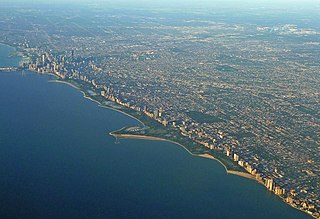
Lincoln Park is a 1,208-acre (489-hectare) park along Lake Michigan on the North Side of Chicago, Illinois. Named after US President Abraham Lincoln, it is the city's largest public park and stretches for seven miles (11 km) from Grand Avenue, on the south, to near Ardmore Avenue on the north, just north of the DuSable Lake Shore Drive terminus at Hollywood Avenue. Two museums and a zoo are located in the oldest part of the park between North Avenue and Diversey Parkway in the eponymous neighborhood. Further to the north, the park is characterized by parkland, beaches, recreational areas, nature reserves, and harbors. To the south, there is a more narrow strip of beaches east of Lake Shore Drive, almost to downtown. With 20 million visitors per year, Lincoln Park is the second-most-visited city park in the United States, behind Manhattan's Central Park.
15. Navy Pier
Navy Pier is a 3,300-foot-long (1,010 m) pier on the shoreline of Lake Michigan, located in the Streeterville neighborhood of the Near North Side community area in Chicago, Illinois, United States. Navy Pier encompasses over 50 acres (20 ha) of shops, restaurants, live theaters, family attractions, parks, gardens, and exhibition facilities and is one of the top destinations in the Midwestern United States, drawing over nine million visitors annually. It is one of the most visited attractions in the entire Midwest and is Chicago's second-most visited tourist attraction.
16. Griffin Museum of Science and Industry
The Griffin Museum of Science and Industry (MSI), formerly known as the Museum of Science and Industry, is a science museum located in Chicago, Illinois, in Jackson Park, in the Hyde Park neighborhood between Lake Michigan and The University of Chicago. It is housed in the Palace of Fine Arts from the 1893 World's Columbian Exposition. Initially endowed by Sears, Roebuck and Company president and philanthropist Julius Rosenwald and supported by the Commercial Club of Chicago, it opened in 1933 during the Century of Progress Exposition. It was renamed for benefactor and financier Kenneth C. Griffin on May 19, 2024.
Wikipedia: Museum of Science and Industry (Chicago) (EN), Website, Opening Hours
17. Jay Pritzker Pavilion
Jay Pritzker Pavilion, also known as Pritzker Pavilion or Pritzker Music Pavilion, is a bandshell in Millennium Park in the Loop community area of Chicago in Cook County, Illinois, United States. It is located on the south side of Randolph Street and east of the Chicago Landmark Historic Michigan Boulevard District. The pavilion was named after Jay Pritzker, whose family is known for owning Hyatt Hotels. The building was designed by architect Frank Gehry, who accepted the design commission in April 1999; the pavilion was constructed between June 1999 and July 2004, opening officially on July 16, 2004.
18. Grant Park
Grant Park is a large urban park in the Loop community area of Chicago, Illinois. Located within the city's central business district, the 319-acre (1.29 km2) park's features include Millennium Park, Buckingham Fountain, the Art Institute of Chicago, and the Museum Campus.
19. Cow
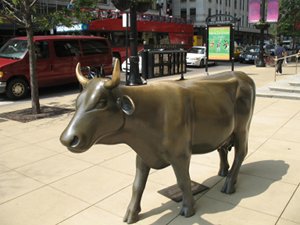
CowParade is an international public art exhibit that has featured in major world cities. Fiberglass sculptures of cows are decorated by local artists, and distributed over the city centre, in public places such as train stations, important avenues, and parks. They often feature artwork and designs specific to local culture, as well as city life and other relevant themes.
20. Pioneer Zephyr
The Pioneer Zephyr is a diesel-powered trainset built by the Budd Company in 1934 for the Chicago, Burlington & Quincy Railroad (CB&Q), commonly known as the Burlington Route. The trainset was the second internal combustion-powered streamliner built for mainline service in the United States, the first such train powered by a diesel engine, and the first to enter revenue service.
21. Frederick C. Robie House
The Frederick C. Robie House is a historic house designed by architect Frank Lloyd Wright in 1908-09 and constructed in 1909-10. It is located in the Hyde Park neighborhood of Chicago, Illinois, on the campus of the University of Chicago. Robie House is regarded as a high point of the Prairie Style and marks the end of Wright’s Oak Park years, an incredibly creative and productive twenty-year period that has been called his first golden age.
22. Chess Studio

Chess Records was an American record company established in 1950 in Chicago, specializing in blues and rhythm and blues. It was the successor to Aristocrat Records, founded in 1947. It expanded into soul music, gospel music, early rock and roll, and jazz and comedy recordings, released on the Chess and its subsidiary labels Checker and Argo/Cadet. The Chess catalogue is owned by Universal Music Group and managed by Geffen Records and Universal Music Enterprises.
23. Joan W. and Irving B. Harris Theater for Music and Dance
The Joan W. and Irving B. Harris Theater for Music and Dance is a 1,499-seat theater for the performing arts located along the northern edge of Millennium Park on Randolph Street in the Loop community area of Chicago in Cook County, Illinois, US. The theater, which is largely underground due to Grant Park-related height restrictions, was named for its primary benefactors, Joan and Irving Harris. It serves as the park's indoor performing venue, a complement to Jay Pritzker Pavilion, which hosts the park's outdoor performances.
24. Clarence Buckingham Memorial Fountain
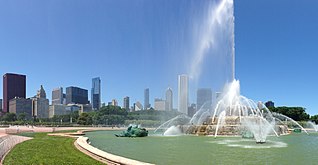
Buckingham Fountain is a Chicago Landmark in the center of Grant Park, between Queen's Landing and the end of Ida B. Wells Drive. Dedicated in 1927 and donated to the city by philanthropist Kate S. Buckingham, it is one of the largest fountains in the world. Built in a rococo wedding cake style and inspired by the Latona Fountain at the Palace of Versailles, its design allegorically represents nearby Lake Michigan. The fountain operates generally from mid-April to mid-October, with regular water-jet displays and evening colored-light shows. During the winter, the fountain is decorated with festival lights.
25. Adler Planetarium
The Adler Planetarium is a public museum in Chicago, Illinois, dedicated to astronomy and astrophysics. It was founded in 1930 by local businessman Max Adler. Located on the northeastern tip of Northerly Island on Lake Michigan, the Adler Planetarium was the first planetarium in the United States. It is part of Chicago's Museum Campus, which includes the John G. Shedd Aquarium and The Field Museum. The Planetarium's mission is to inspire exploration and understanding of the universe.
26. Museum of Contemporary Art
The Museum of Contemporary Art (MCA) Chicago is a contemporary art museum near Water Tower Place in the Near North Side of Chicago, Illinois, United States. The museum, which was established in 1967, is one of the world's largest contemporary art venues. The museum's collection is composed of thousands of objects of Post-World War II visual art. The museum is run gallery-style, with individually curated exhibitions throughout the year. Each exhibition may be composed of temporary loans, pieces from their permanent collection, or a combination of the two.
27. Historical Route 66 Starting Place
U.S. Route 66 was a United States Numbered Highway in Illinois that connected St. Louis, Missouri, and Chicago, Illinois. The historic Route 66, the Mother Road or Main Street of America, took long distance automobile travelers from Chicago to Southern California. The highway had previously been Illinois Route 4 and the road has now been largely replaced with Interstate 55 (I-55). Parts of the road still carry traffic and six separate portions of the roadbed have been listed on the National Register of Historic Places.
28. Chicago Water Tower
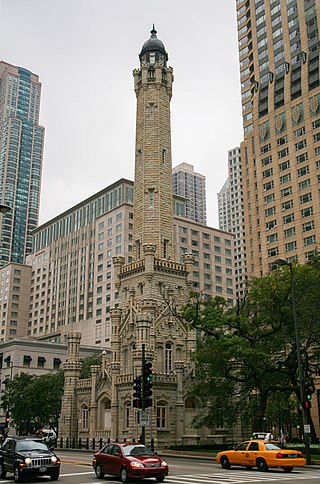
The Chicago Water Tower is a contributing property and landmark in the Old Chicago Water Tower District in Chicago, Illinois, United States, that is listed on the National Register of Historic Places. Built to enclose the tall machinery of a powerful water pump in 1869, it became particularly well known when it survived the Great Chicago Fire of 1871, although the area around it was burnt to the ground.
29. Jackson Park
Jackson Park is a 551.5-acre (223.2 ha) urban park on the shore of Lake Michigan on the South Side of Chicago. Straddling the Hyde Park, Woodlawn, and South Shore neighborhoods, the park was designed in 1871 by Frederick Law Olmsted and Calvert Vaux and remodeled in 1893 to serve as the site of the World's Columbian Exposition. It is one of the largest and most historically significant parks in the city, and many of the park's features are mementos of the fair—including the Garden of the Phoenix, the Statue of The Republic, and the Museum of Science and Industry.
30. John Peter Altgeld Momument
John Peter Altgeld was an American politician and the 20th Governor of Illinois, serving from 1893 until 1897. He was the first Democrat to govern that state since the 1850s. A leading figure of the Progressive movement, Altgeld signed workplace safety and child labor laws, pardoned three of the men convicted in the Haymarket Affair, and rejected calls in 1894 to break up the Pullman strike by force. In 1896 he was a leader of the progressive wing of the Democratic Party, opposing President Grover Cleveland and the conservative Bourbon Democrats. He was defeated for reelection in 1896 in an intensely fought, bitter campaign.
31. Holy Name Cathedral
Holy Name Cathedral in Chicago is the seat of the Archdiocese of Chicago, one of the largest Catholic dioceses in the United States. The church serves as the episcopal seat of the current Archbishop of Chicago, Cardinal Blase J. Cupich.
32. Little Village Arch
South Lawndale is a community area on the West Side of Chicago, Illinois. Over 80% of the residents are of Mexican descent and the community is home to the largest foreign-born Mexican population in Chicago.
33. Chicago Picasso
The Chicago Picasso is an untitled monumental sculpture by Pablo Picasso in Daley Plaza in Chicago, Illinois. The 1967 installation of The Picasso, "precipitated an aesthetic shift in civic and urban planning, broadening the idea of public art beyond the commemorative."
34. DuSable Black History Museum and Education Center
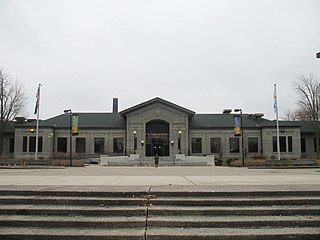
The DuSable Black History Museum and Education Center, formerly the DuSable Museum of African American History, is a museum in Chicago that is dedicated to the study and conservation of African-American history, culture, and art. It was founded in 1961 by Margaret Taylor-Burroughs, her husband Charles Burroughs, Gerard Lew, Eugene Feldman, Bernard Goss, Marian M. Hadley, and others. They established the museum to celebrate black culture, at the time overlooked by most museums and academic establishments. The museum has an affiliation with the Smithsonian Institution.
Wikipedia: DuSable Black History Museum and Education Center (EN), Website
35. Saint Joseph Ukrainian Catholic Church
St. Joseph the Betrothed Ukrainian Greek-Catholic Church is a Ukrainian church located in Chicago and belonging to the St. Nicholas Eparchy for the Ukrainian Catholics. The building has an ultra-modern roof, comprising thirteen gold domes which symbolize the twelve apostles and Jesus Christ as the largest center dome.
Wikipedia: St. Joseph the Betrothed Ukrainian Greek Catholic Church (EN)
36. McCormick Bridgehouse & Chicago River Museum
The DuSable Bridge is a bascule bridge that carries Michigan Avenue across the main stem of the Chicago River in downtown Chicago, Illinois, United States. The bridge was proposed in the early 20th century as part of a plan to link Grant Park (downtown) and Lincoln Park (uptown) with a grand boulevard. Construction of the bridge started in 1918, it opened to traffic in 1920, and decorative work was completed in 1928. The bridge provides passage for vehicles and pedestrians on two levels. An example of a fixed trunnion bascule bridge, it may be raised to allow tall ships and boats to pass underneath. The bridge is included in the Michigan–Wacker Historic District and has been designated as a Chicago Landmark.
37. Chicago History Museum
Chicago History Museum is the museum of the Chicago Historical Society (CHS). The CHS was founded in 1856 to study and interpret Chicago's history. The museum has been located in Lincoln Park since the 1930s at 1601 North Clark Street at the intersection of North Avenue in the Old Town Triangle neighborhood, where the museum has been expanded several times. Long known as the CHS, the society adopted the name, Chicago History Museum, in September 2006 for its public presence.
38. Washington Park
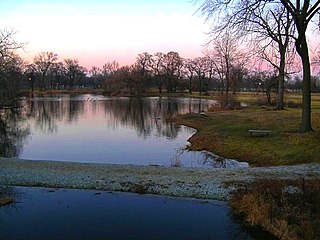
Washington Park is a 372-acre (1.5 km2) park between Cottage Grove Avenue and Martin Luther King Drive, located at 5531 S. Martin Luther King Dr. in the Washington Park community area on the South Side of Chicago. It was named for President George Washington in 1880. Washington Park is the largest of four Chicago Park District parks named after persons surnamed Washington. Located in the park is the DuSable Museum of African American History. This park was the proposed site of the Olympic Stadium and the Olympic swimming venue for Chicago's bid to host the 2016 Summer Olympics. Washington Park was added to the National Register of Historic Places on August 20, 2004.
39. Chicago Harbor Lighthouse
The Chicago Harbor Lighthouse is an automated active lighthouse, and stands at the south end of the northern breakwater protecting the Chicago Harbor, to the east of Navy Pier and the mouth of the Chicago River.
40. Uptown Theatre
Uptown Theatre is a currently closed movie palace and concert venue located in the Uptown neighborhood of Chicago, Illinois. Designed by Rapp and built by Paschen Bros. contractors, it is one of the many movie palaces built by the Balaban & Katz theatre chain run by A. J. Balaban, his brother Barney Balaban, and their partner Sam Katz.
41. KAM Isaiah Israel Temple
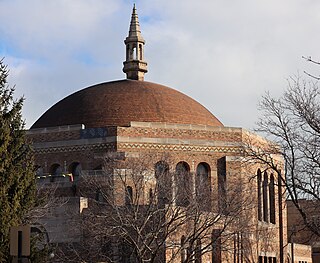
KAM Isaiah Israel is a Reform Jewish congregation and synagogue located at 1100 East Hyde Park Boulevard in the historic Kenwood neighborhood of Chicago, Illinois, in the United States. It is the oldest Jewish congregation in Chicago, with its oldest core founded in 1847 as Kehilath Anshe Ma'arav.
42. Pritzker Military Museum & Library
The Pritzker Military Museum & Library is a non-profit museum and a research library for the study of military history on Michigan Avenue in Chicago, Illinois. The institution was founded in 2003, and its specialist collections include material relating to Winston Churchill and war-related sheet music.
Wikipedia: Pritzker Military Museum & Library (EN), Website, Website
43. National Park Service Pullman Visitor Center
Pullman National Historical Park is a historic district located in Chicago, Illinois, United States, which in the 19th century was the first model, planned industrial community in the United States. The district had its origins in the manufacturing plans and organization of the Pullman Company and became one of the most well-known company towns in the United States, as well as the scene of the violent 1894 Pullman strike. It was built for George Pullman as a place to produce the Pullman railroad-sleeping cars.
44. Midway Plaisance
The Midway Plaisance, known locally as the Midway, is a public park on the South Side of Chicago, Illinois. It is one mile long by 220 yards wide and extends along 59th and 60th streets, joining Washington Park at its west end and Jackson Park at its east end. It divides the Hyde Park community area to the north from the Woodlawn community area to the south. Near Lake Michigan, the Midway is about 6 miles (10 km) south of the downtown "Loop". The University of Chicago was founded just north of the park, and university buildings now front the Midway to the south, as well.
45. Abraham Lincoln: The Man
Abraham Lincoln: The Man is a larger-than-life size 12-foot (3.7 m) bronze statue of Abraham Lincoln, the 16th president of the United States. The original statue is in Lincoln Park in Chicago, and later re-castings of the statue have been given as diplomatic gifts from the United States to the United Kingdom, and to Mexico.
46. Lurie Garden
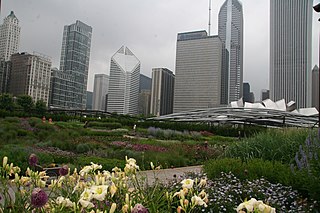
Lurie Garden is a 2.5-acre (10,000 m2) garden located at the southern end of Millennium Park in the Loop area of Chicago in Cook County, Illinois, United States. Designed by GGN, Piet Oudolf, and Robert Israel, it opened on July 16, 2004. The garden is a combination of perennials, bulbs, native prairie grasses, shrubs and trees. It is the featured nature component of the world's largest green roof. The garden cost $13.2 million and has a $10 million endowment for maintenance and upkeep. It was named after Ann Lurie, who donated the $10 million endowment. For visitors, the garden features guided walks, lectures, interactive demonstrations, family festivals and picnics.
47. Money Museum
The Federal Reserve Bank of Chicago is one of twelve Federal Reserve Banks that, along with the Federal Reserve Board of Governors, make up the Federal Reserve System, the United States' central bank. The Chicago Fed serves the Seventh District, which encompasses the northern portions of Illinois and Indiana, southern Wisconsin, the Lower Peninsula of Michigan, and the state of Iowa. In addition to participation in the formulation of monetary policy, each Reserve Bank supervises member banks and bank holding companies, provides financial services to depository institutions and the U.S. government, and monitors economic conditions in its District.
48. Emanuel Congregation
Emanuel Congregation is a Reform Jewish congregation and synagogue located at 5959 North Sheridan Road, in the Edgewater neighborhood of Chicago, Illinois, in the United States. The congregation was founded in 1880.
49. Auditorium Theatre
The Auditorium Theatre is a music and performance venue located in the Auditorium Building at 50 E. Ida B. Wells Drive in Chicago, Illinois. Inspired by the Richardsonian Romanesque Style of architect Henry Hobson Richardson, the building was designed by Dankmar Adler and Louis Sullivan and completed in 1889. The Chicago Symphony Orchestra performed in the theatre until 1904 as well as the Chicago Grand Opera Company and its successors the Chicago Opera Association and Chicago Civic Opera until its relocation to the Civic Opera House in 1929. The theater was home to the Joffrey Ballet from 1998 until 2020. It currently hosts a variety of concerts, musicals, performances, and events. Since the 1940s, it has been owned by Roosevelt University and since the 1960s it has been refurbished and managed by an independent non-profit arts organization.
50. CIBC Theatre
CIBC Theatre is a performing arts theater located at 18 West Monroe Street in the Loop area of downtown Chicago. It is operated by Broadway In Chicago, part of the Nederlander Organization. Opened in 1906 as the Majestic Theatre, it currently seats 1,800 and for many years has presented Broadway shows. In its early years, the theater presented vaudeville celebrity acts.
51. Congress Theater
The Congress Theater is a historic movie palace in the Logan Square neighborhood of Chicago. Fridstein and Company designed it in 1926 for the movie theater operator Lubliner and Trinz. It features ornate exterior and interior design work in a combination of the Classical Revival and Italian Renaissance styles. It was listed on the National Register of Historic Places in 2017.
52. James C. Petrillo Music Shell
The Petrillo Music Shell is an outdoor amphitheater in Grant Park in the Loop community area of Chicago in Cook County, Illinois, United States. It serves as host to many large annual music festivals in the city such as Chicago Blues Festival, Chicago Jazz Festival, Taste of Chicago and Lollapalooza.
53. Fountain of the Great Lakes
Fountain of the Great Lakes, or Spirit of the Great Lakes Fountain, is an allegorical sculpture and fountain by Lorado Taft. The bronze artwork, created between 1907 and 1913, depicts five women arranged so that the fountains waterfall recalls the waterflow through the five Great Lakes of North America. In the Great Lakes, the waterflow begins in Lake Superior at 600 feet (180 m) above sea level and continues eastward through each lake until it reaches Lake Ontario. The Fountain is one of Taft's best known works. It is located in the public South McCormick Memorial Court of the Art Institute of Chicago, in the Chicago Loop.
54. Merle Reskin Theatre
The Merle Reskin Theatre is a performing arts venue located in the Loop community area of Chicago, Illinois. Originally named the Blackstone Theatre it was built in 1910. Renamed the Merle Reskin Theatre in 1992, it is now part of DePaul University, and is also used for events and performances of other groups. It serves as the home of the Chicago Playworks for Families and Young Audiences series produced by The Theatre School of DePaul.
55. Nuclear Energy
Nuclear Energy (1964–1966) is a bronze sculpture by Henry Moore on the campus of the University of Chicago at the site of the world's first nuclear reactor, Chicago Pile-1. The first human-made self-sustaining nuclear chain reaction was created here on December 2, 1942. The sculpture is set in a granite paved quadrangle, with the paving stones radiating outward from the sculpture, and memorial plaques mounted on a adjacent wall. The memorial site is a National Historic Landmark and Chicago Landmark.
56. Marquette Park
Marquette Park, the largest park on the southwest side of Chicago, Illinois, at 323 acres (1.31 km2), is located at 41.768°N 87.703°W in the city's Chicago Lawn neighborhood. The park is named for Father Jacques Marquette (1637–1675).
57. Polish Museum of America
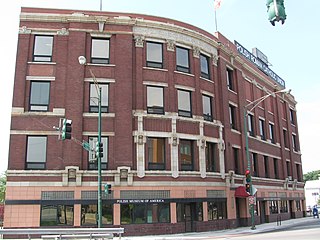
The Polish Museum of America is located in West Town, in what had been the historical Polish Downtown neighborhood of Chicago. It is home to numerous Polish artifacts, artwork, and embroidered folk costumes in its growing collection. Founded in 1935, it is one of the oldest ethnic museums in the United States and a Core Member of the Chicago Cultural Alliance, a consortium of 25 ethnic museums and cultural centers in Chicago.
58. S.R. Crown Hall
S. R. Crown Hall, designed by the German-American Modernist architect Ludwig Mies van der Rohe, is the home of the College of Architecture at the Illinois Institute of Technology in Chicago, Illinois.
59. Avalon Regal Theater
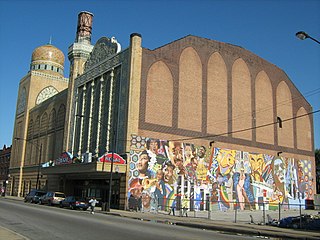
The Avalon Regal Theater is a music hall located at 1641 East 79th Street, bordered by the Avalon Park and South Shore neighborhoods on the south side of Chicago, Illinois, United States. The theater opened in August 1927 and is a noted venue for African-American performers.
60. Saint Hedwig Roman Catholic Church
St. Hedwig's Church is a historic parish church of the Roman Catholic Archdiocese of Chicago located in Chicago, Illinois. Constructed in the grand Polish Cathedral style, it is one of the many monumental Polish churches visible from the Kennedy Expressway. The church is located at 2226 North Hoyne Avenue.
61. Lion “in an attitude of defiance”
Lions is a pair of 1893 bronze sculptures by Edward Kemeys, installed outside of the main entrance to the Art Institute of Chicago in Chicago, Illinois. The sculptures are well-recognized public artworks.
62. Chopin Theatre
Chopin Theatre is an independent performing arts venue located in Wicker Park, Chicago. Reopened in 1990 by Zygmunt Dyrkacz, a Polish immigrant, the theater has become a significant cultural hub known for its eclectic programming and commitment to avant-garde and experimental performances. Since 1990, Chopin Theatre has hosted over 2,100 presentations as well as its own productions, ranging from theater and dance to music and literary events. The venue is particularly renowned for showcasing international works, especially from Eastern Europe, and has played a crucial role in introducing Chicago audiences to innovative and challenging performances. The theater's influence extends beyond its productions, as it has been instrumental in fostering a vibrant arts community within Chicago, making it one of the city's best venues for theater.
63. The Peggy Notebaert Nature Museum
The Peggy Notebaert Nature Museum is a natural history museum located in Chicago, Illinois, and operated by the Chicago Academy of Sciences. The museum traces its history to the founding collection of the academy in 1857. After a century at a nearby location, where it was the first of what eventually became eleven Chicago museum-in-the-parks, the academy built and opened its present museum named for benefactor Peggy Notebaert in 1999 at the intersection of Fullerton Parkway and Cannon Drive in Lincoln Park. The institution focuses on the natural history of the Chicago region, and offers educational programs for children and adults. It is also known for its live butterfly house, which is attached to a laboratory and program to study and enhance native Chicago area butterfly populations.
Wikipedia: Peggy Notebaert Nature Museum (EN), Website, Facebook
64. Huntington Bank Pavilion at Northerly Island

Huntington Bank Pavilion at Northerly Island is an outdoor amphitheater located on the human-made peninsula Northerly Island, in Chicago, Illinois. The venue is a temporary structure, with the summer concert season running from May or June until September or October. The amphitheater opened in June 2005. It was previously named the FirstMerit Bank Pavilion, and before that the Charter One Pavilion.
65. Fine Arts Building
The ten-story Fine Arts Building, formerly known as the Studebaker Building, is located at 410 S Michigan Avenue across from Grant Park in Chicago in the Chicago Landmark Historic Michigan Boulevard District. It was built for the Studebaker company in 1884–1885 by Solon Spencer Beman, and extensively remodeled in 1898, when Beman removed the building's eighth (top) story and added three new stories. Studebaker constructed the building as a carriage sales and service operation with manufacturing on upper floors. The two granite columns at the main entrance, 3 feet 8 inches (1.12 m) in diameter and 12 feet 10 inches (3.91 m) high, were said to be the largest polished monolithic shafts in the country. The interior features Art Nouveau motifs and murals by artists such as Martha Susan Baker, Frederic Clay Bartlett, Oliver Dennett Grover, Frank Xavier Leyendecker, and Bertha Sophia Menzler-Peyton dating from the 1898 renovation. In the early 20th century, the Kalo Shop and Wilro Shop, firms owned by women and specializing in Arts and Crafts items, were established in the renamed Fine Arts Building.
66. Symphony Center
Symphony Center is a music complex located at 220 South Michigan Avenue in the Loop area of Chicago, Illinois. Home to the Chicago Symphony Orchestra (CSO); Chicago Symphony Chorus; Civic Orchestra of Chicago; and the Institute for Learning, Access, and Training; Symphony Center includes the 2,522-seat Orchestra Hall, which dates from 1904; Buntrock Hall, a rehearsal and performance space named for the CSO trustee and benefactor Dean L. Buntrock; Grainger Ballroom, an event space overlooking Michigan Avenue and the Art Institute of Chicago; a public multi-story rotunda; Forte, a restaurant and café; and administrative offices. In June 1993, plans to significantly renovate and expand Orchestra Hall were approved and the $110 million project resulting in Symphony Center, completed in 1997.
67. Holy Trinity Catholic Church
Holy Trinity Church is a historic church of the Roman Catholic Archdiocese of Chicago located at 1118 North Noble Street. It is a prime example of the so-called 'Polish cathedral style' of churches, in both its opulence and grand scale. Along with such monumental religious edifices as St. Mary of the Angels, St. Hedwig's or St. John Cantius, it is one of the many Polish churches that dominate over the Kennedy Expressway in the Pulaski Park neighborhood of Chicago.
Wikipedia: Holy Trinity Roman Catholic Church (Chicago) (EN)
68. Saint Stanislaus Kostka Roman Catholic Church
Saint Stanislaus Kostka Catholic Church is a historic Polish church of the Roman Catholic Archdiocese of Chicago that is located at 1351 West Evergreen Avenue in the Pulaski Park neighborhood of Chicago, Illinois, United States. It is designated as the Sanctuary of Divine Mercy of the Archdiocese.
69. Washington Square
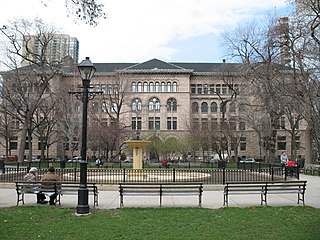
Washington Square, also known as Washington Square Park, is a park in Chicago, Illinois. A registered historic landmark that is better known by its nickname Bughouse Square, it was the most celebrated open air free-speech center in the country as well as a popular Chicago tourist attraction. It is located across Walton Street from Newberry Library at 901 N. Clark Street in the Near North Side community area of Chicago, Illinois, United States. It is Chicago's oldest existing small park. It is one of four Chicago Park District parks named after persons surnamed Washington. It was added to the National Register of Historic Places on May 20, 1991.
70. Our Lady of Sorrows Basilica
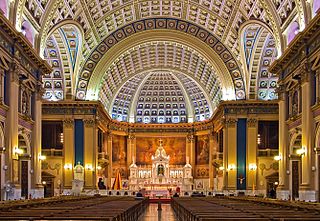
Our Lady of Sorrows Basilica is a Catholic basilica on the West Side of Chicago, Illinois, which also houses the National Shrine of Saint Peregrine. Located at 3121 West Jackson Boulevard, within the Archdiocese of Chicago, it is, along with St. Hyacinth and Queen of All Saints, one of only three churches in Illinois designated by the Pope with the title of basilica.
71. Biograph Theatre
The Biograph Theater on Lincoln Avenue in the Lincoln Park neighborhood of Chicago, Illinois, was originally a movie theater but now presents live productions. It gained early notoriety as the location where bank robber John Dillinger was leaving when he was shot down by FBI agents, after he watched a gangster movie there on July 22, 1934. The theater is on the National Register of Historic Places and was designated a Chicago Landmark on March 28, 2001.
72. Harold Washington Cultural Center
Harold Washington Cultural Center is a performance facility located in the historic Bronzeville neighborhood of Chicago's South Side. It was named after Chicago's first African-American Mayor Harold Washington and opened in August 2004, ten years after initial groundbreaking. In addition to the 1,000-seat Commonwealth Edison (Com-Ed) Theatre, the center offers a Digital Media Resource Center. Former Chicago City Council Alderman Dorothy Tillman and singer Lou Rawls take credit for championing the center, which cost $19.5 million. It was originally to be named the Lou Rawls Cultural Center, but Alderman Tillman changed the name without telling Rawls. Although it is considered part of the Bronzeville neighborhood it is not part of the Chicago Landmark Black Metropolis-Bronzeville District that is in the Douglas community area.
73. Calder's Flamingo
Flamingo, a sculpture by American artist Alexander Calder, is a 53-foot-tall (16 m) stabile located in the Federal Plaza in front of the Kluczynski Federal Building in Chicago, Illinois, United States. It was commissioned by the United States General Services Administration and was unveiled in 1974, although Calder's signature on the sculpture indicates it was constructed in 1973.
74. Hery Gerber House
The Henry Gerber House is located on North Crilly Court in the Old Town neighborhood of Chicago, Illinois, United States. It is a single-family brick row house built in 1885 in the Queen Anne style, mostly intact from that time. In the 1920s it housed the apartment occupied by German-born Henry Gerber, founder of the short-lived Society for Human Rights, which was incorporated in Illinois as the first American organization working for gay rights. Inspired by nascent gay-rights organizations he had seen in Germany, Gerber held meetings here and published newsletters, the first known gay civil rights periodicals in the country, for a year until the Chicago police raided the house in 1925.
75. Second Presbyterian Church
Second Presbyterian Church is a landmark Gothic Revival church located on South Michigan Avenue in Chicago, Illinois, United States. In the late nineteenth and early twentieth centuries, some of Chicago's most prominent families attended this church. It is renowned for its interior, completely redone in the Arts and Crafts style after a disastrous fire in 1900. The sanctuary is one of America's best examples of an unaltered Arts and Crafts church interior, fully embodying that movement's principles of simplicity, hand craftsmanship, and unity of design. It also boasts nine imposing Tiffany windows. The church was listed on the National Register of Historic Places in 1974 and later designated a Chicago Landmark on September 28, 1977. It was designated a National Historic Landmark in March 2013.
76. Holy Trinity Russian Orthodox Cathedral
Holy Trinity Orthodox Cathedral is the cathedral church of the Orthodox Church in America Diocese of the Midwest. It is one of only two churches designed by Louis Sullivan, one of the seminal architects of the late 19th and early 20th centuries. It is listed on the US National Register of Historic Places and is designated a Chicago Landmark.
77. Former Chicago Historical Society Building
The Former Chicago Historical Society Building is a historic landmark located at 632 N. Dearborn Street on the northwest corner of Dearborn and Ontario streets near downtown Chicago. Built in 1892, the granite-clad building is a prime example of Henry Ives Cobb's Richardsonian Romanesque architecture. Henry Cobb designed this home for Walter Loomis Newberry, founder of the Newberry Library in Chicago. The building was designated a Chicago Landmark in 1997. It was listed on the National Register of Historic Places in 1978, under the name, Old Chicago Historical Society Building.
78. Chicago Riverwalk
The Chicago Riverwalk is a multi-use public open space located on the south bank of the main branch of the Chicago River in Chicago, extending from Lake Michigan and the Outer Drive Bridge westward to the Wolf Point area and Lake Street. The Chicago Riverwalk contains restaurants, bars, cafes, small parks, boat and kayak rentals, a Vietnam War memorial, and other amenities.
79. William W. Powers State Recreation Area
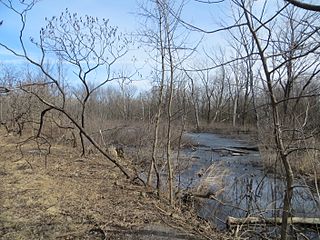
William W. Powers State Recreation Area is an Illinois state park administered by the Illinois Department of Natural Resources on 580 acres (230 ha) in the Hegewisch community area of the City of Chicago in Cook County, Illinois, United States. The area includes 419 acres (170 ha) of water in Wolf Lake that provides about 6 miles (10 km) of shoreline to fishermen. The park hosts about half a million visitors annually. The park contains numerous species, and is one of the most important biological sites in the Chicago region.
80. Italo Balbo Monument
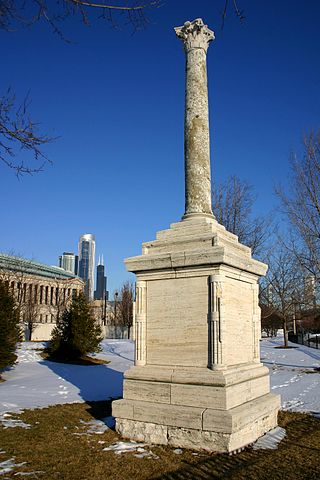
The Balbo Monument consists of a column that is approximately 2,000 years old dating from between 117 and 38 BC and a contemporary stone base. It was taken from an ancient port town outside of Rome by Benito Mussolini and given to the city of Chicago in 1933 to honor the trans-Atlantic flight led by Italo Balbo to the Century of Progress Worlds Fair.
81. Victory Monument
Erected in 1927, the Victory Monument, is a bronze and granite sculptural monument, based on a concept by John A. Nyden, and sculpted by Leonard Crunelle. It was built to honor the Eighth Regiment of the Illinois National Guard, an African-American unit that served with distinction in France during World War I. It may be the only memorial statue dedicated to African-American soldiers of the Great War.
82. Maggie Daley Park
Maggie Daley Park is a 20-acre (81,000 m2) public park in the Loop community area of Chicago operated by the Chicago Park District. It is near the Lake Michigan shoreline in northeastern Grant Park where Daley Bicentennial Plaza previously stood. Maggie Daley Park, like its predecessor, is connected to Millennium Park by the BP Pedestrian Bridge. Designed by landscape architect Michael Van Valkenburgh, the park had its ceremonial ribbon cutting on December 13, 2014, and is named for Maggie Daley, the former first lady of the city who died of cancer in 2011. The park was almost entirely remade with multiple new features including a new field house designed by Valerio Dewalt Train, an ice skating ribbon, climbing walls, landscaping and children's playground. An older section of the park maintains a garden dedicated earlier to honor cancer survivors. The park is bounded by Randolph Street, Monroe, Columbus and Lake Shore Drives. Construction took 2 years and cost $60 million, including rebuilding an underground parking lot.
83. Chicago Children's Museum
The Chicago Children's Museum is located at Navy Pier in Chicago, Illinois. It was founded in 1982 by The Junior League of Chicago who were responding to programming cutbacks in the Chicago Public Schools. Originally housed in two hallways of the Chicago Public Library, it soon began to offer trunk shows and traveling exhibits in response to capacity crowds on-site.
84. Covenant Presbyterian Church
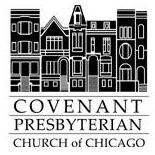
The former Cathedral of All Saints of the Polish National Catholic Church in Chicago, referred to in Polish as Katedra Wszystkich Świętych is a historic church building located in the Bucktown neighborhood of Chicago in Cook County, Illinois, United States. Colloquially referred to as the White Cathedral, it is a prime example of the so-called 'Polish Cathedral style' of churches in both its opulence and grand scale. Along with St. Wenceslaus, St. Mary of the Angels, and Holy Trinity it is one of the many monumental Polish churches visible from the Kennedy Expressway. Due to the building's high maintenance costs it was sold in December 1993 and now houses Covenant Presbyterian Church of Chicago, a church affiliated with the Presbyterian Church in America. A former chapel at All Saints Polish National Catholic Cemetery on Higgins Avenue and River Road was expanded and now houses the current Cathedral of the Western Diocese of the Polish National Catholic Church.
Wikipedia: Covenant Presbyterian Church (Chicago, Illinois) (EN)
85. Equestrian Indians (The Bowman)
The Bowman and The Spearman, also known collectively as Equestrian Indians, or simply Indians, are two bronze equestrian sculptures standing as gatekeepers in Congress Plaza, at the intersection of Ida B. Wells Drive and Michigan Avenue in Chicago's Grant Park, in the U.S. state of Illinois. The sculptures were made in Zagreb by Croatian sculptor Ivan Meštrović and installed at the entrance of the parkway in 1928. Funding was provided by the Benjamin Ferguson Fund.
86. Chicago Shakespeare Theater
Chicago Shakespeare Theater (CST) is a non-profit, professional theater company located at Navy Pier in Chicago, Illinois. Its more than six hundred annual performances performed 48 weeks of the year include its critically acclaimed Shakespeare series, its World's Stage touring productions, and youth education and family oriented programming. The theater had garnered 77 Joseph Jefferson awards and three Laurence Olivier Awards. In 2008, it was the winner of the Regional Theatre Tony Award.
87. Oz Park
Oz Park is a public park in the Lincoln Park neighborhood of North Side, Chicago. It is located at 2021 North Burling Street, at the corner of Lincoln and Webster, just south of the Lincoln, Halsted, and Fullerton intersection.
88. Henry B. Clarke House
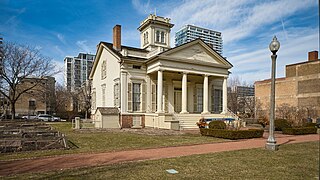
The Henry B. and Caroline Clarke/Bishop Louis Henry and Margaret Ford House or Clarke-Ford House is a Greek Revival style home, now serving as a house museum in Chicago, Illinois, United States. Built around 1836, it is considered the oldest existing house built in Chicago. Henry Brown Clarke was a native of New York State who had come to Chicago in 1833 with his wife, Caroline Palmer Clarke, and his family. He was in the hardware business with William Jones and Byram King, establishing King, Jones and Company, and provided building materials to the growing Chicago populace. The house was built by a local contractor, probably John C. Rue, who later married the Clarkes' housemaid, Elizabeth (Betsy) Saunders.
89. Loyola University Museum of Art
The Loyola University Museum of Art (LUMA), which opened in the fall of 2005, is unique among Chicago's many museums for mounting exhibits that explore the spiritual in art from all cultures, faiths, and eras. LUMA is located on Loyola University Chicago's Water Tower Campus in downtown Chicago, at 820 North Michigan Ave.
90. Charnley-Pesky House Museum
The James Charnley Residence, also known as the Charnley-Persky House, is a historic house museum at 1365 North Astor Street in the near northside Gold Coast neighborhood of Chicago, Illinois. Designed in 1891 and completed in 1892, it is one of the few surviving residential works of Adler & Sullivan.
91. Stephen A. Douglas Tomb
The Stephen A. Douglas Tomb and Memorial or Stephen Douglas Monument Park is a memorial that includes the tomb of United States Senator Stephen A. Douglas (1813–1861). It is located at 636 E. 35th Street in the Bronzeville neighborhood of Chicago, Illinois, near the site of the Union Army and prisoner of war Camp Douglas. The land was originally owned by Douglas’ estate but was sold to the state of Illinois, when it became known as “Camp Douglas” serving first as training grounds for Union soldiers during the Civil War, then as a prisoner of war camp.
92. Rainbow Pylon
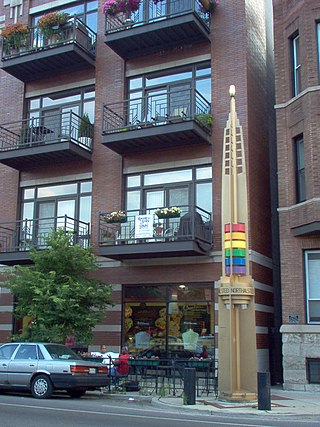
The Legacy Walk is an outdoor public display on North Halsted Street in Chicago, Illinois, United States, which celebrates LGBT contributions to world history and culture. According to its website, it is "the world's only outdoor museum walk and youth education program dedicated to combating anti-gay bullying by celebrating LGBT contributions to history." It is the world's largest collection of bronze biographical memorials.
93. Al Sadiq Mosque
The Al Sadiq Mosque was commissioned in 1922 in the Bronzeville neighborhood in city of Chicago. The Al-Sadiq Mosque is one of America's earliest built mosques and the oldest standing mosque in the country today. This mosque was funded with the money predominantly donated by African-American Ahmadi Muslim converts.
94. First Unitarian Church of Chicago
The First Unitarian Church of Chicago is a Unitarian Universalist ("UU") church in Chicago, Illinois. Unitarians do not have a common creed and include people with a wide variety of personal beliefs, and include atheists, agnostics, deists, monotheists, pantheists, polytheists, pagans, as well as other belief systems.
95. Third Unitarian Church
The Third Unitarian Church (TUC) is a Unitarian Universalist church in the West Side of Chicago, Illinois, United States. It was founded in November 1868. Because of its pioneering architecture for its day, it has become much of a landmark in Chicago, and is now an official landmark. The church is liberal and describes itself as "a progressive, welcoming, and diverse congregation".
96. Kids Off The Block Gun Violence Memorial
Kids Off the Block (KOB) was a memorial of stones of young people killed by gun violence. The memorial was located in Chicago's West Pullman neighborhood, with the mission "to provide at-risk low income youth positive alternatives to gangs, drugs, truancy, violence and the juvenile justice system."
97. Abraham Lincoln: The Head of State
Abraham Lincoln: The Head of State is a 9-foot (2.7 m) tall bronze statue of Abraham Lincoln in Grant Park, in Chicago. Created by Augustus Saint-Gaudens and completed by his workshop in 1908, it was intended by the artist to evoke the loneliness and burden of command felt by Lincoln during his presidency. The sculpture depicts a contemplative Lincoln seated in a chair, and gazing down into the distance. The sculpture is set upon a pedestal and a 150-foot (46 m) wide exedra designed by architect Stanford White.
98. Temple Sholom
Temple Sholom is a Reform Jewish congregation and synagogue located at 3480 North Lake Shore Drive in Chicago, Illinois, in the United States. Founded in 1867, as of 2010 it was one of the oldest and largest congregations in Chicago with over 1,100 member families.
99. South Shore Cultural Center
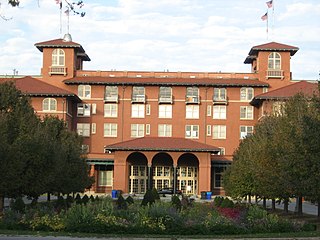
The South Shore Cultural Center, in Chicago, Illinois, is a cultural facility located at 71st Street and South Shore Drive, in the city's South Shore neighborhood. It encompasses the club facility, grounds, and beach of the former South Shore Country Club, which in the 1970s became part of the public Chicago Park District.
100. David and Alfred Smart Museum of Art
The David and Alfred Smart Museum of Art is an art museum located on the campus of the University of Chicago in Chicago, Illinois. The permanent collection has over 15,000 objects. Admission is free and open to the public.
Share
How likely are you to recommend us?
Disclaimer Please be aware of your surroundings and do not enter private property. We are not liable for any damages that occur during the tours.
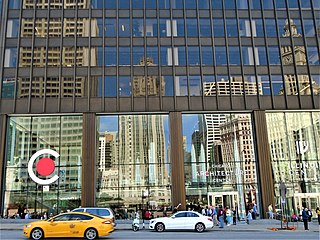
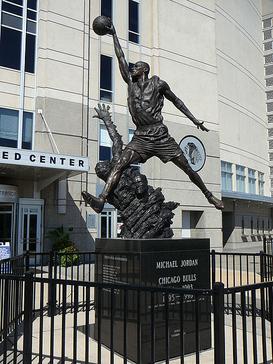
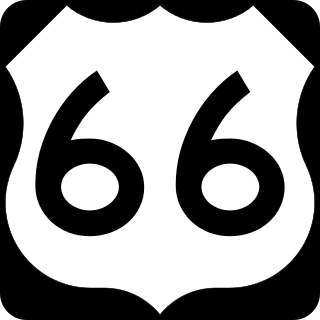
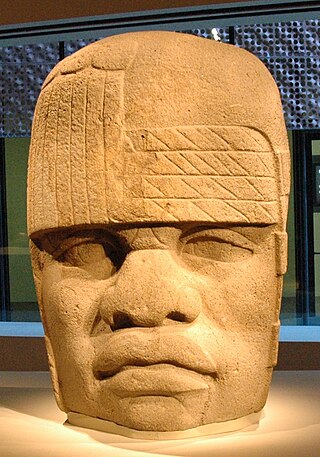
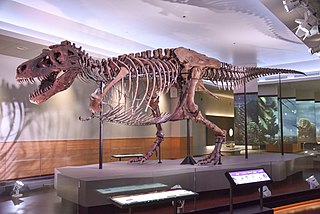
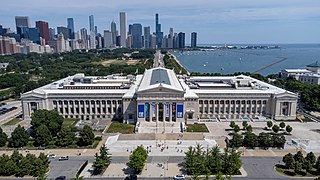
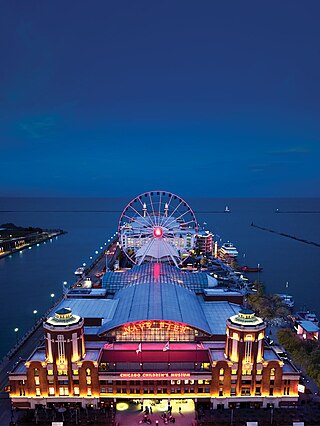
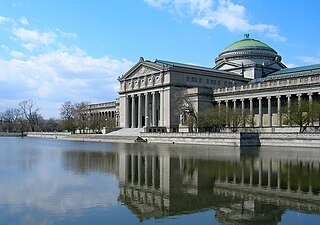
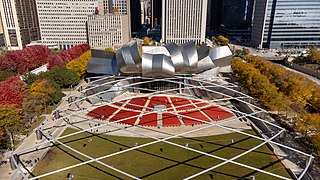
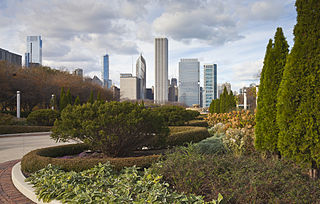

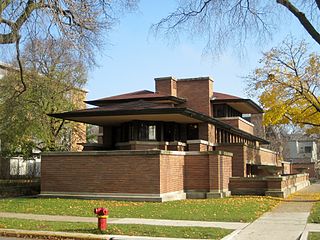
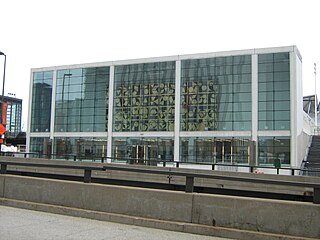
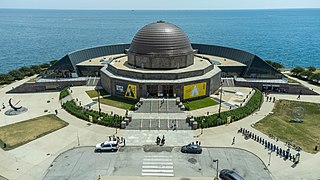
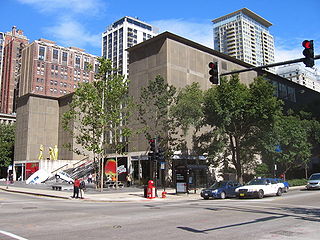
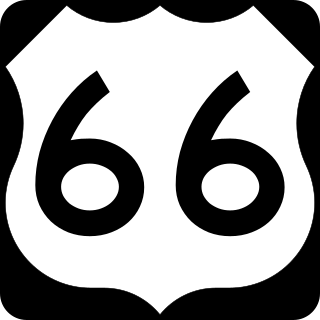
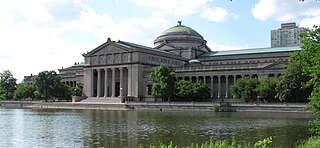
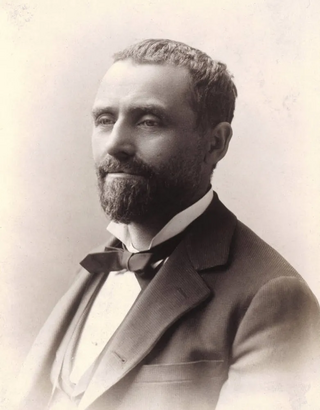
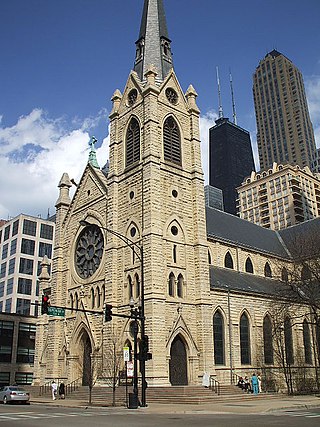
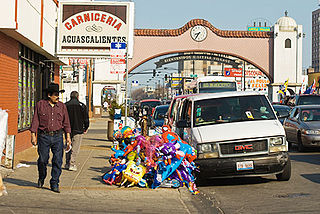
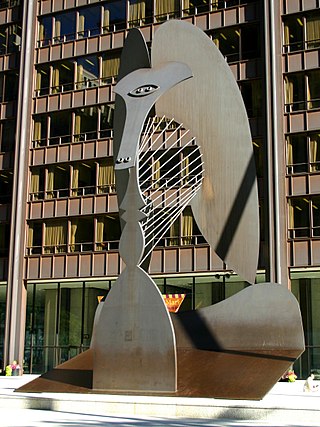
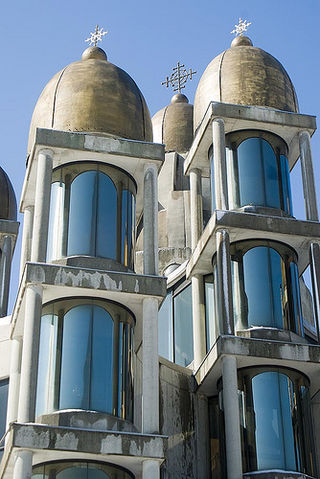
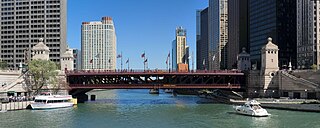
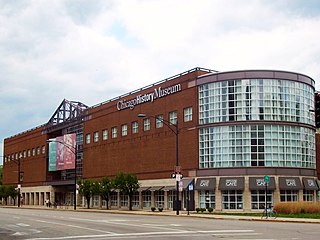
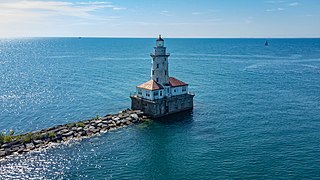
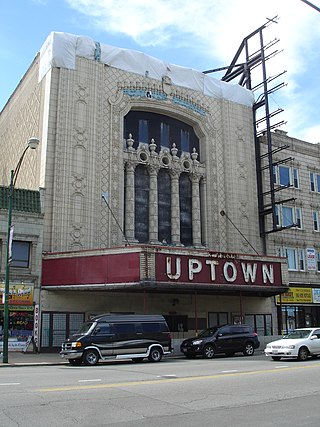
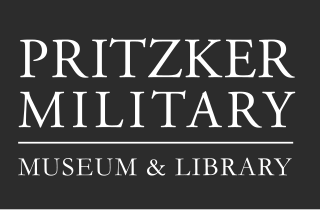
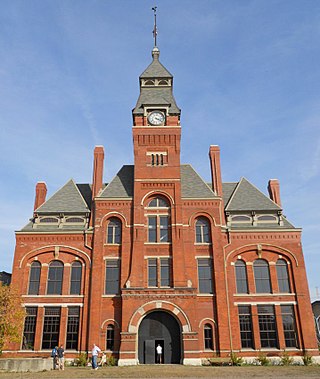
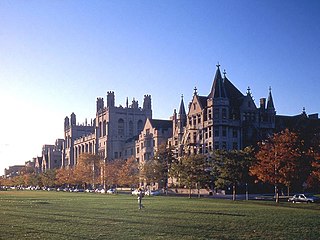
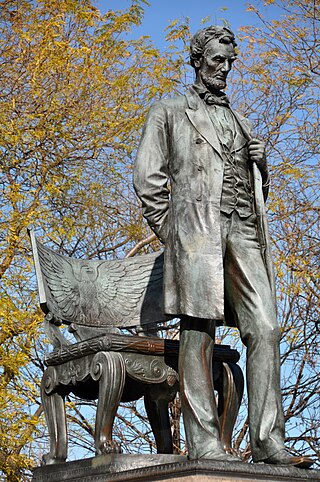

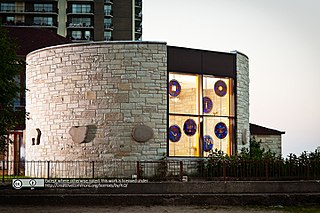
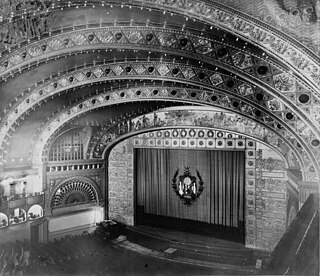
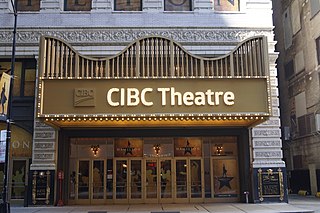
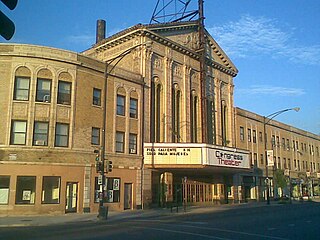
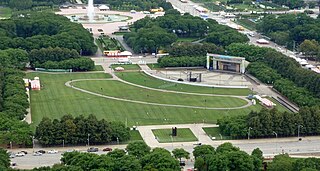
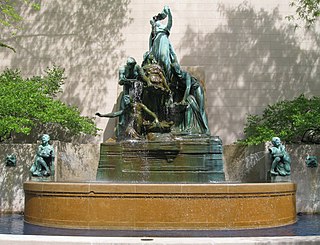
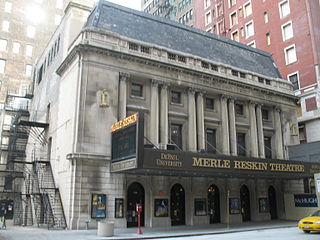
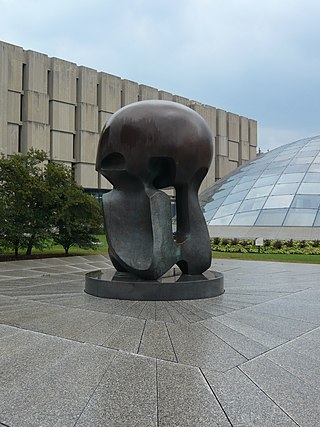
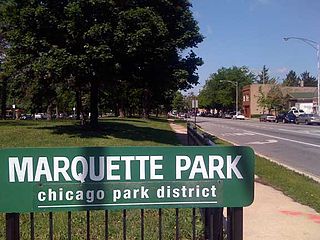
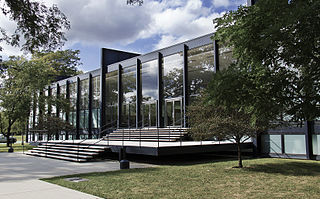
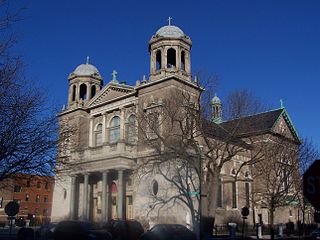
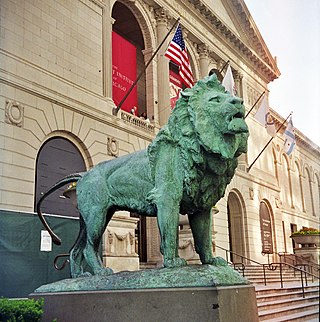
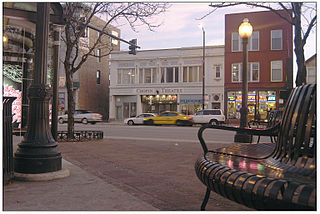
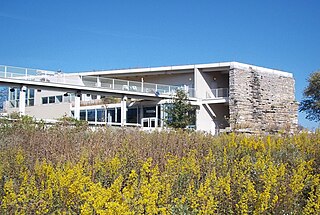
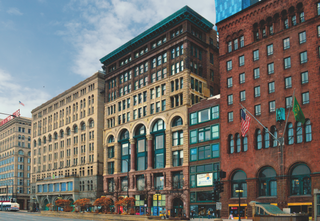
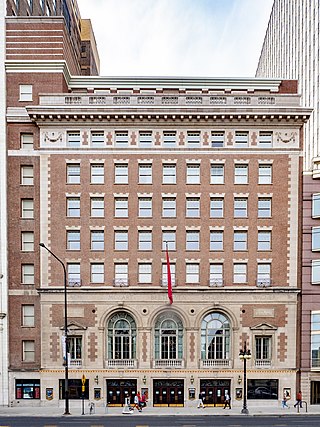
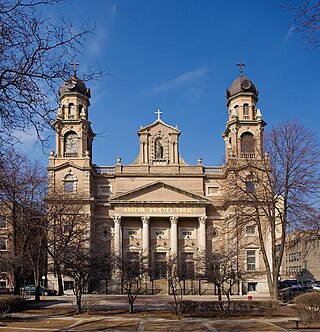
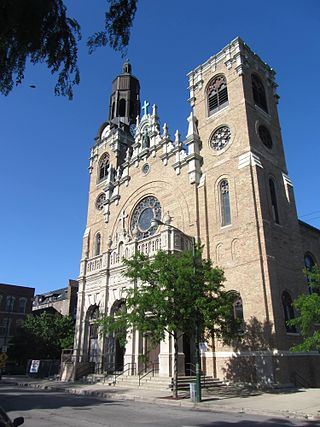
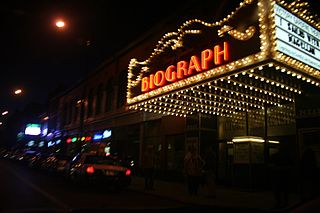
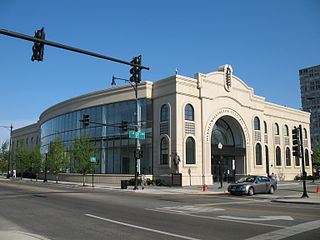
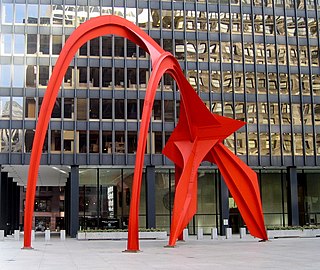
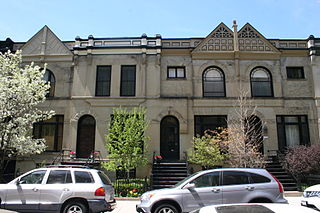
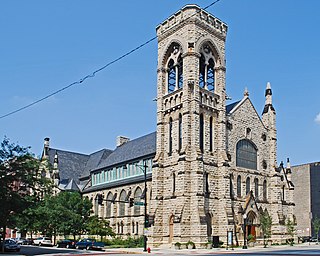
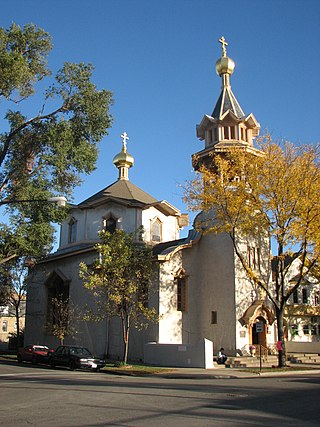
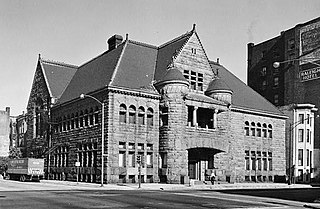
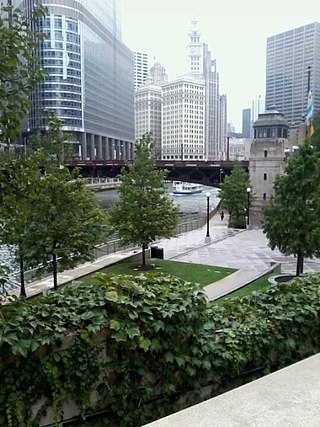
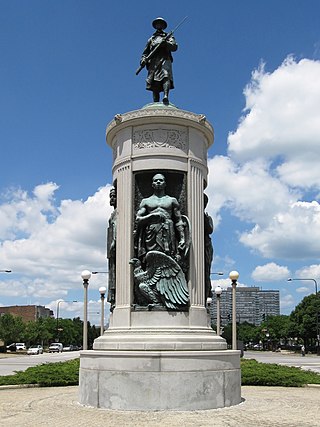
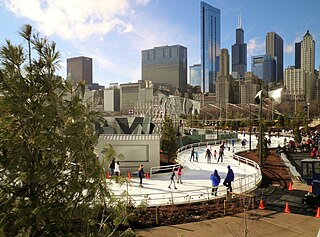
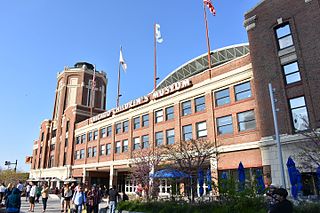
.jpg)
